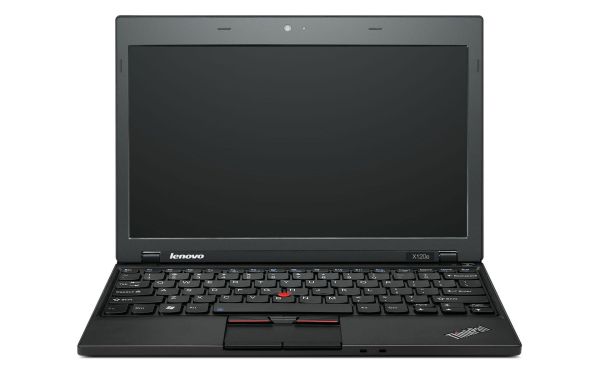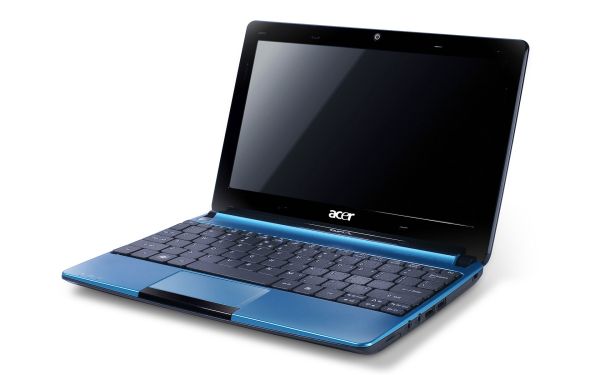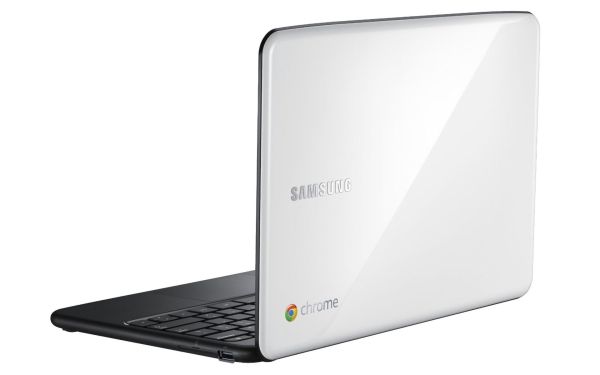Holiday 2011 Laptop Buyer’s Guide
by Jarred Walton on December 2, 2011 3:45 AM ESTGoing Cheap: Netbooks and Chromebooks
Sometimes all you want is a really inexpensive laptop that you can carry with you all day, without worrying about finding somewhere to plug in. For this market, there are really two hardware platforms to look at: Intel’s Atom and AMD’s Brazos. In terms of size, “netbook” means different things to different people, but we’ll confine the discussion to 10.1”, 11.6”, and 12.1” offerings—the latter being important for getting the faster dual-core Brazos (AMD E-series) processors. Let’s start with the AMD recommendation first.
Recommended Netbook
Somewhat surprisingly, even a year after the Brazos launch, laptops with the C-series processors remain rather sparse. A quick look at Newegg for instance shows only a few C-series laptops, most of them from Acer; the two laptops that aren’t from Acer come from ASUS, and let’s just be clear: we’re not interested in a 15.6” laptop with a C-50 or C-60 processor—or even the higher clocked E-350 and E-450 offerings. If you’re going to use a Brazos APU, we don’t see any need for a larger size chassis. Once we whittle down the list to 12” or smaller, it shouldn’t come as much of a surprise that we end up back at our Editors’ Choice HP dm1 yet again.

Everything you need in a netbook: HP dm1 for $480 ($50 mail-in rebate available)
The price is a bit lower than the last time we mentioned it, and there are a few minor upgrades. $480 (with a $50 rebate) will get you 4GB RAM, a 320GB 7200RPM hard drive, and the 1.65GHz E-450 processor. The overall build quality is still one of the better Brazos offerings, and while the display is only average quality, that’s hard to avoid in the sub-$500 laptop market. Battery life is quoted at up to 9.5 hours, which is close enough to what we measured that we’ll go with it.
ThinkPad quality for the same price: Lenovo X120e for $435
As an alternative—and in many ways, it's actually better than the HP dm1—consider the Lenovo ThinkPad X120e. Normally it's priced over $500, but Lenovo has some great sales going on most of their product line right now. You can currently get the X120e with 4GB RAM, E-350 APU, and a matte display for under $500 direct from Lenovo, or if you don't want to custom configure your system you can get the same thing for $435 shipped. HP has the edge (by a very slim margin) with an E-450 over the E-350, but for most users it won't matter.
What if you’re willing to give up some performance and/or features to get the price even lower? You’ll have to give up on the E-350/450 in that case and opt for the AMD C-50/60 in its place. The results is still more flexible than Atom (particularly in multimedia workloads), and you can get the price under $300 with the current sales. As noted, only Acer and ASUS appear to be shipping small netbook-class systems with C-series APUs, and between the Acer and ASUS offerings our pick would be the 12.1” ASUS Eee PC 1215B, currently going for a clearance price of $260 (but with only 1GB RAM).
Acer’s alternatives still have their undesirable floating island keyboard, but they compensate with other features. The Acer AO522 gives you a 10.1” C-50 netbook with 1GB RAM for $290, while the Acer AO722 bumps up to an 11.6” chassis and stuffs in 4GB RAM, a 500GB 5400RPM HDD, and a C-60 APU for $350. The C-60 is more desirable than the C-50, thanks to Turbo Core on both the CPU and GPU, but is it worth a lesser quality keyboard and an increase in price of $70? Probably not.
Atom Netbook Recommendation
While we’d say Brazos is pretty much universally faster than Atom, it’s not necessarily cheaper and thus there’s still a potential market for Atom-based netbooks. You can get great battery life and a small form factor, with performance that’s still “fast enough” for basic office/email/internet use. What we wouldn’t recommend for Atom netbooks is using them for multimedia content (HD videos especially), practically any form of gaming, or even use with Flash applications/games. If you’re okay with that stipulation, then Atom netbooks can be a handy secondary/tertiary device. Atom is also the platform of choice for Google’s Chromebook initiative, which we’ll cover below.
Go cheap or go home: Acer Aspire One D257 for $230
If you’re in the market for an Atom netbook, price has to be the overriding consideration—see above for the $260 Brazos C-50. While there are many Atom netbooks out there, few of them are available for less than the low water mark that Brazos sets. We’re not handing out awards for build quality or features, but when it comes to lowest price possible it’s hardly a surprise to see an Acer netbook hit the mark. Short of any major sales, it looks like the Acer Aspire One D257 is the cheapest Atom N570 netbook around right now, going for $230 online, although it does skimp on the battery capacity to get there. If you want an Atom processor with a decent battery, you’re back into the $270+ range, at which point we just don’t feel Atom makes sense.
What about Atom Chromebooks?
So we’re pretty bearish on the current Atom netbooks, but there’s another mobile contender in town, and so far it’s Atom-only hardware: the Chromebook. Right now there are only two Chromebook manufacturers shipping hardware, Acer and Samsung. We’ve covered their announcements, but more importantly we now have review samples from both companies in hand. So, which is the better Chromebook, and what do we think of Chrome OS in general now that it’s matured since our original look?
Chomebook, because you dislike Windows: Samsung Series 5 WiFi for $350
Not surprisingly, the choice between the two models largely comes down to price vs. quality. I only received the two Chromebooks this week, so I haven’t had a lot of time to use them, but while the keyboard layouts are identical the keyboards are not. Acer goes for their “floating island” keys and Samsung uses chiclet keys; of the two options I definitely prefer the Samsung keys. Samsung also has a nicer looking build, and a better display in some respects—maximum brightness is slightly higher and it has a matte finish rather than going glossy. While neither display is high contrast, the Samsung fares better outdoors thanks to its non-reflective nature. Take all of those elements together and which Chromebook comes out on top? The Samsung Series 5. However, the $50 savings of the Acer still makes it viable.
Outside of the actual hardware, Chromebooks are interesting for the change to a largely cloud-oriented computing experience. While there is some support for local storage, doing things like accessing files stored on other networked PCs isn’t something you can do. You store your documents in the cloud and everything else comes via the Chrome browser, so unless you have a home web server where you store your files, a Chromebook is for media consumption and cloud/Internet work. I’m sure others will take to the switch much more readily, but for someone entrenched in my usage patterns of Word, Excel, Thunderbird, and Photoshop as my primary applications (outside of the web browser), it can be a bit too much.
Where the Chomebooks do impress is in their ability to use relatively slow hardware (e.g. Atom CPUs with 1GB RAM) to deliver a decent web experience. Sure, a fast laptop or desktop PC will still load pages quicker than a Chromebook, and certain content (e.g. HD YouTube videos) proves too much for the platform (at least until the next CPU/GPU update). But if you’re interested in some comparative performance results, SunSpider 0.9.1 checks in at 1346ms, which is still 25% faster than the fastest tablet we’ve tested to date in that particular benchmark (ASUS’ Eee Prime Transformer). For general web surfing, Chromebooks feel quite a bit better than regular Windows netbooks, though there are still areas where they fall short (Flash games, HD videos, and other similar content is too much for the Atom N570 + GMA 3150).
If tablet hardware is fast enough for most Internet related tasks, Atom Chromebooks are right in the mix (minus the sluggish GMA 3150 graphics—I do feel like Chromebooks can still benefit from a faster GPU, particularly for multimedia consumption; it would be very interesting to see a Chromebook based on AMD’s C-60). For some, that’s good enough and the price, size, and battery life are right. There’s also the novelty factor—using a Chromebook very much changes the way you do things, which some enthusiasts might enjoy. For most others, however, a “normal” laptop is still the way to go—particularly when we consider that you can get Windows netbooks with reasonable hardware for around the same price as the least expensive Chromebook.













88 Comments
View All Comments
JarredWalton - Saturday, December 3, 2011 - link
...You wanted to talk about the keyboard experience, so let's do that.You're correct: the key depth is very shallow, but how much that matters is largely up to personal taste. It's the placement of the keys as much as the shape that helps me with typing, and I can definitely type on the UX31E. It won't win any awards for the keyboard, but to utterly dismiss it just because the key travel is shallow (which seems to be part of what we'll see on ultrabooks in general)? Nope, I don't buy that argument at all.
I'd suggest getting keyboard backlighting in place would be higher on my list of priorities than key travel, and I'd really like ASUS to move the power key out of the current location (which is where the Delete key belongs--I had to sset Windows to ignore pressing the power button after the third time I inadvertently "typed" Power Off).
Anyway, the keyboard isn't a ThinkPad or a Dell Latitude, but it's also not an Acer. I'd rate the layout as decent (outside of the power key) but the feel of the keys as below average. And I would much rather be typing on my Microsoft Natural Keyboard. Still, if I were in the market for an ultrabook (I'm not), out of the three or four 13.3" models currently available I'd go for the ASUS, mostly because 1600x900 with a so-so keyboard beats 1366x768 with a slightly better keyboard. I just don't think anyone is going to give me an excellent keyboard in an ultrabook.
And yes, this whole comment was written on the UX31E and I'm not feeling any worse about the experience than I did before starting. Fact is, I've got the Acer S3 sitting right next to me as I type this and having just typing a few quick sentences on it I can say that key travel isn't much better there. I think ultrabooks are going to be about compromise, and one of those compromises is in the keyboard travel. When you set the maximum thickness of the laptop at 0.8", you won't get the quarter inch of travel found in a desktop keyboard.
JarredWalton - Saturday, December 3, 2011 - link
PS: Just for you I've added a note about the keyboard on the UX31E in the article, suggesting potential customers try one out in person if that's an area that matters to them.Penti - Friday, December 2, 2011 - link
You miss a whole category I bought a Arrandale (before SNB) CULV 11.6" (1366x768) laptop some while ago for basically as cheap as you get, for the same price as Atom netbooks which comes with decent battery, W7HP instead of W7 Starter and so on. With basically better battery life (got the slightly larger battery, cheapest model don't have them regardless if it's netbook or cheap ultraportable), cpu, software support and it feels like a real computer. Netbooks have no place when you get better hardware for the same price and power envelope. It's nothing to recommend.I'm not terribly sure what you got in that market now in the states, but I would prefer cheaper Intel chips here they are simply much higher end then Brazos or Atom. But you can get something like Toshiba L735-S3350 with Pentium B950, 4GB, 500GB 13.3-inch 1366x768 for 500 USD, Acer TimelineX AS3830T-6870 with Core i5 2430M 2.4GHz, 4GB, 500GB 13.3-inch 1366x768 for 600 USD. HP Pavilion dm1-4050us Core i3 2367M 1.4GHz, 4GB, 500GB 11.6-inch 1366x768 incl external dvd-drive for 570-600 USD. Or more in those lines, it doesn't have to be netbooks or 1000 - 1200 dollar ultrabooks. Certainly worth it for the extra 90 bucks to get a dm1-4050us over a dm1z Brazos netbook. Sure might be $140 with the MIR, but still worth it over the Brazos. I take a hundred dollar over a Atom or Brazos laptop any day. Still cheap or small enough and enough power to contend with 13-15" cheap models too. When we are talking non-properly speced out Atom netbooks for 200-300 they only has 3-cell batteries and virtually no battery life and other drawbacks such as Windows 7 Starter, low amount of memory and low res display, no webcams, bluetooth and so on. Like no hardware accelerated video (and thus Flash player video) on Atom's GMA3150 without Broadcom accelerator card, and I'm not sure you can even get that anymore from HP or others. That's not a problem with the Brazos. But I would still go Intel over Brazos here, they are simply not very powerful and kinda the wrong niche when compared to cheaper Intel Sandybridge stuff. There's more choices any way which was my point.
Penti - Friday, December 2, 2011 - link
I wouldn't call a Llano which has worthless graphics in all fairness no faster then integrated HD 3000 Graphics a choice when it comes to gaming and I would even be critical and pushing it to call GT540M a choice for low-end gaming.That IPS displays don't end up in 11-16" laptops is basically because they aren't manufactured or are manufactured in low volume or are expensive, or power hungry. HP's dreamcolor 15" IPS display is still specced at 15 Watts. In tablets they usually use AFFS+ displays for outdoor viewability which you simply don't get with IPS displays in that way. Even though some Tablet PC's do use IPS displays in the 12-13" range. However does displays probably end up costing quiet a lot.
For gaming I would probably say something like GTX550M or HD6750M is minimum. You can probably find some Llano with HD 6755G2/HD6750M for 500 refurbish and 700 ordinarily if you like budget. If you really like an AMD option. But again for 700 you have Intel options as well. 650-700 is probably where you find yourself under those 1000 dollar machines.
seapeople - Saturday, December 3, 2011 - link
Since the GT550m can play Starcraft 2 at 1080p in high just fine, I don't think the ~20% or so drop off to the GT540m disqualifies it for "low-end gaming".Penti - Saturday, December 3, 2011 - link
You would need GT550M for 1366x768 gaming basically for other games, but of course Llano without discrete GPU is disqualified. You wouldn't even get SC2 on 1366x768 medium on that. You need a discrete graphics card if you like to play SC2 at reasonable level. GT540M is just pushing on the limit to be disqualified, which is why I didn't outright say it's useless. For example a game like Metro 2033 would be too heavy for GT540M at 1366x768 and does not meet the _minimum_ requirements of many games at all. Anandtech here concluded for that matter that GT555M is not or just barely enough to drive 1600x900 in Alienware M14x in most games.Roland00Address - Monday, December 5, 2011 - link
For console ports Llano is fine for cheap laptops, since cheap laptops usually have 1366x768 resolution.PC focused games on the other hand is a different matter, high settings is another matter since what most people consider "medium settings" is what a xbox 360 is really running.
Malih - Friday, December 2, 2011 - link
tired of waiting for good ultrabooks with decent speed, good heat dissipation and good display,finally I put an end to all the wait and decided to get a MacBook Pro 13 (Late 2011),
I'm using it (mostly) on Windows, as I bought the Windows version of my work/development tools, it would be too costly, highly inefficient to buy the mac version too.
Vxheous - Friday, December 2, 2011 - link
I bought a G74SX-xc1 for $1350 Cdn, which other than 8 GB of RAM instead of 12GB, or having an SSD, was comparable in spec to some of the pricier G74 models. the XC1 is probably your best bang for buck in the midrangefrozentundra123456 - Friday, December 2, 2011 - link
Great article.One note however. I went to the Sears site, and several reviewers stated that that particular laptop has a somewhat gimped GT 560 M with a slower memory bus. I think the same thing happened a while back at Best Buy. They had a really good price on an asus gaming laptop, but the video card had a slower memory bus than the normal cards.
It wouldnt be a deal breaker for me, and that price is outstanding. But it is just something to be aware of regarding that notebook. Like I said, I would also be wary buying at Best Buy because they tend to do the same thing.